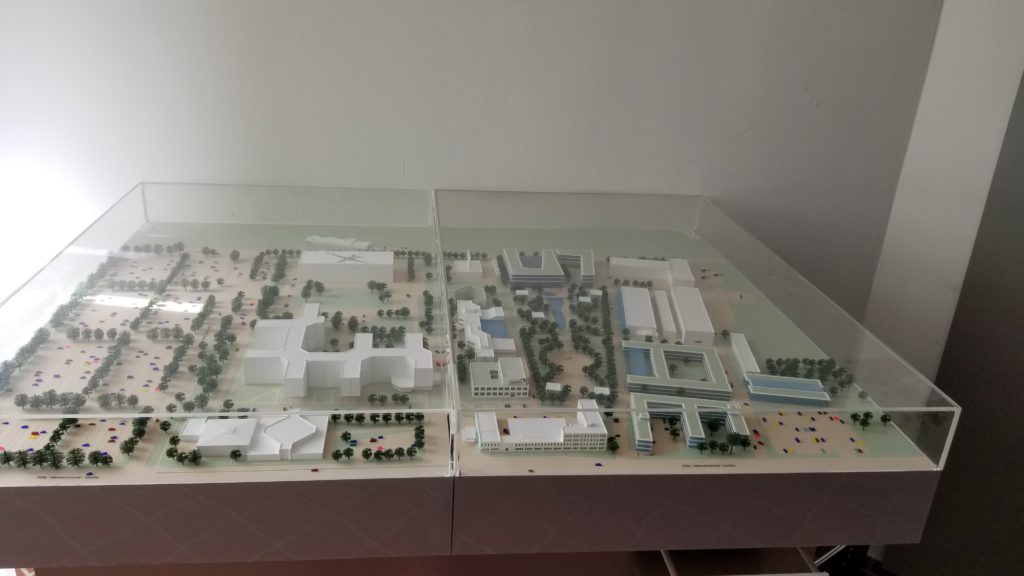This day, Patricia Parlevliet showed us several sites on the Airbus campus Ludwig Bölkow. This place is home to research institutes and startups that are mainly related to aeronautics. We visited 8 stations which allowed us to better understand the activities on campus. For reasons of confidentiality, we have few photos to present.

AIRBUS
We started the day with a visit to Airbus space and defense. We were able to visit the solar panel assembly facilities dedicated to the satellites. Each panel is composed of about 4000 solar cells with a power between 0.5 and 0.75 Watt for a total of about 12 KW of electric power supplied to the satellite. During this visit we were able to compare the facilities of Sattechnik (the student club we visited during our visit to TUM on Monday which makes cubeSat, miniature satellites) and the much larger ones of Airbus who make more traditional satellites. The Airbus white room is at least 10 times larger and its use is regulated by ISO standards.
Hensoldt
We continued our day with the visit of the company Hensoldt which works mainly in planes communication systems, as much in the civil field as the military field. Currently, they are also working on 3D printed circuit board. This technology is still in development. To print a circuit, they use two types of liquid ink, much like in an inkjet printer. In an inkjet printer, we use different types of colors, they use inks with different electrical properties. The first is made of polyurethane and does not conduct electricity. The second is made of silver and it allows electrical conductivity. To print in 3D, they print a first layer using these two inks, then the « layer » is passed under UV lights to allow it to dry. Then the second layer is printed on top and so on. As this technology is still at its experimental stage, several improvements are still needed. The first, the replacement of the silver ink by another metal with a lower cost like copper. Then, Hensoldt would like to have an ink able to imitate the resistances necessary to the electric circuits. Ultimately as an ultimate goal, they would like to be able to print their own semiconductors. This last advance is the one with the most implications. It would be possible to directly embed all the components of your computer directly in the PCB, the processor, the memory, everything. Moreover the whole thing can remain hiden so it reduce the risk of industrial espionage.
Airbus CTO
We then had a presentation of Airbus activities, its interactions with their various stakeholders, the values and objectives of the organization.
Air corridor station
Then we visited a wind tunnel testing laboratory where they simulate the meteorological conditions that airplanes fill in flight. These tests make it possible, for example, to evaluate the quality of the parts recovery.
Mechanical resistance station
We visited mechanical test sites that could perform various tests to measure the physical limits of different materials under conditions ranging from -195 to 600 degrees C
Air Communication Station
Sitting in a plane, we had a presentation of the communication interface of the aircraft that uses satellite and land.
Munich Composit
Then we had the chance to visit an old startup (8 years old) who specialized in carbon fiber braiding. This process makes it possible to optimize the direction of the fibers and thus reinforce the manufactured parts to enable them to withstand certain types of specific forces. They specialize in sporting goods, they make ultra-light bike wheels, hockey sticks (hockey not our good old ice hockey) and finally performance bike frames.
Munich Aerospace
Finally our visit ended with Munich Aerospace, this entity is dedicated to the cooperation between several companies working in the field of aeronautics. It funds doctoral study projects if the latter is headed by at least two companies belonging to the group.